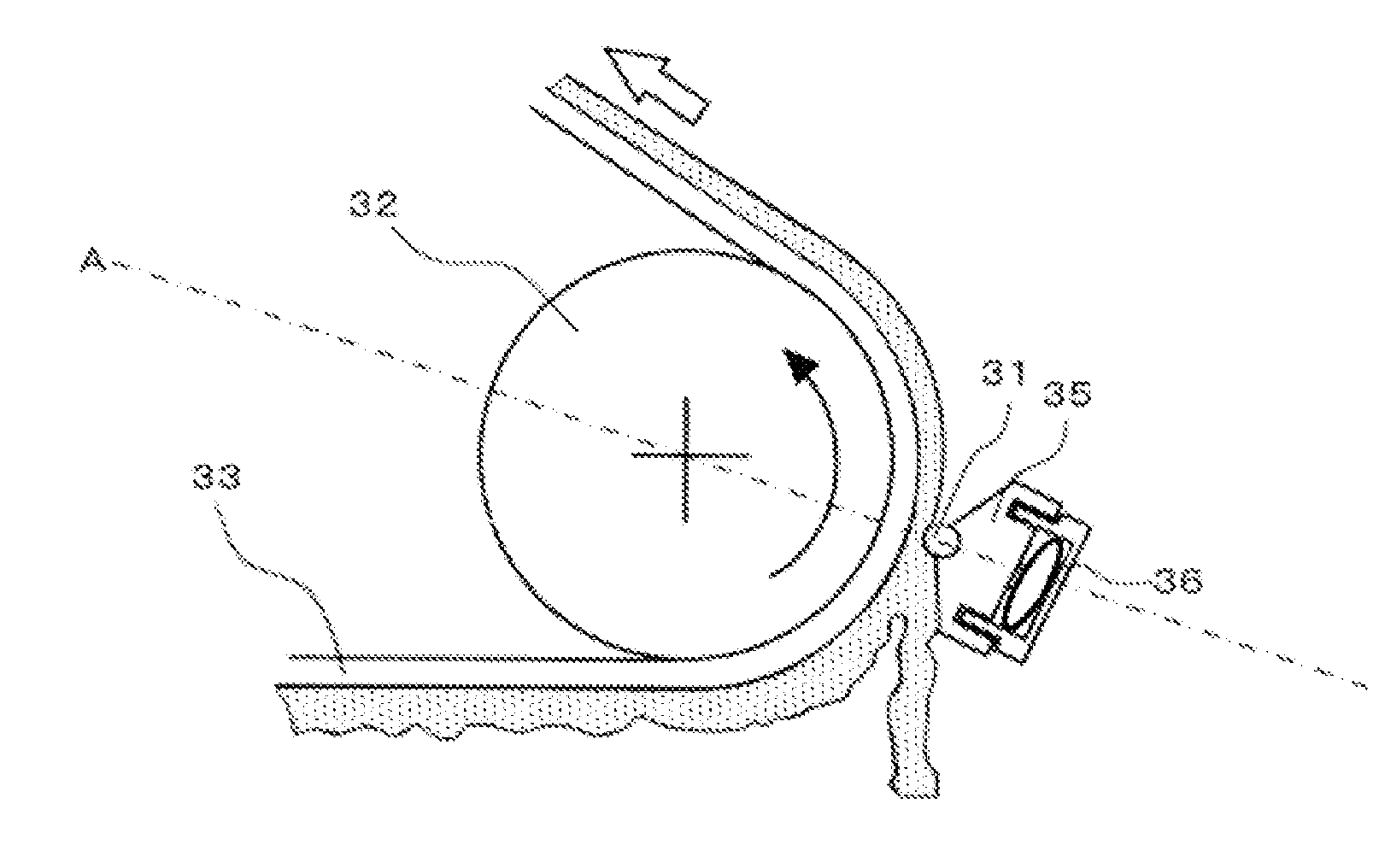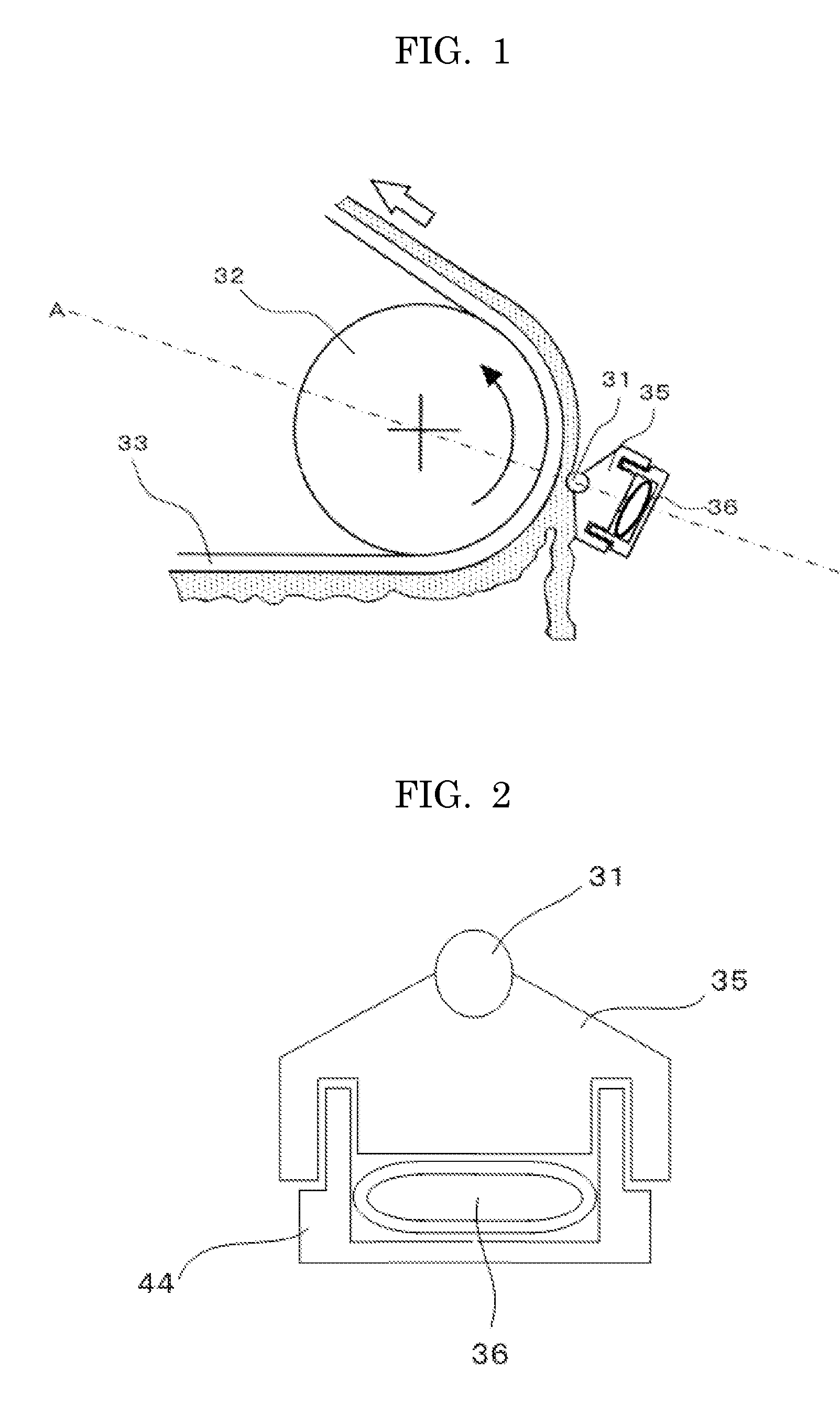Roll blade coating method and roll blade coating apparatus
- Summary
- Abstract
- Description
- Claims
- Application Information
AI Technical Summary
Benefits of technology
Problems solved by technology
Method used
Image
Examples
example 1
[0089]Using the roll blade coating apparatus of the present application shown in FIG. 4, coating was performed under the following conditions and while the adhesion amount of a coating liquid on a web in the width direction was confirmed using an on-line adhesion amount meter, the air pressure of each air cylinder was adjusted to minimize deviation in the adhesion amount thereof on the web in the width direction.
[0090]Specifically, as shown in FIG. 11, the pressures of four air cylinders 16 in the vicinity of each of the both ends of the web were reduced in 4 steps so as to be reduced in each step by 15% with respect to the average air pressure (100%) of the other 56 operating air cylinders. The air cylinders were arranged in such a manner that the edge of the web 13 was located substantially on the middle of the four air cylinders 16 in the width direction (X in FIG. 11).
[0091]Finally, the minimum deviation which could be adjusted was 3.6%.[0092](1) Coating base (web): woodfree pap...
example 2
[0102]Using a roll blade coating apparatus of the present invention, in which a part of the disc-shaped flat plate member 20, which part is brought into contact with the rod 21 of the air cylinder 16 is formed into a downward-facing concave spherical surface, and a head of the rod 21 of the air cylinder 16 is formed into a convex spherical surface shown in FIGS. 7 and 8, coating was performed under the following conditions and while the adhesion amount of a coating liquid on a web in the width direction was confirmed using the on-line adhesion amount meter, the air pressure of each air cylinder was adjusted to minimize deviation in the adhesion amount thereof on the web in the width direction.
[0103]Specifically, as shown in FIG. 11, the pressures of four air cylinders 16 in the vicinity of each of the both ends of the web were reduced in 4 steps so as to be reduced in each step by 15% with respect to the average air pressure (100%) of the other 56 operating air cylinders. The air cy...
example 3
[0115]The deviation in adhesion amount of a coating liquid on a web in the width direction was minimized in the same manner as in Example 1, except that, as shown in FIG. 12, the pressures of two air cylinders 16 in the vicinity of each of the both ends of the web were reduced in 2 steps so as to be reduced in each step by 15% with respect to the average air pressure (100%) of the other 58 operating air cylinders. The air cylinders 16 were arranged in such a manner that the edge of the web 13 was located substantially on the middle of the two air cylinders 16 in the width direction (X in FIG. 12).
[0116]The number of arranged cylinder: 80
[0117]The number of operating cylinder: 62
[0118]Finally, the minimum deviation which could be adjusted was 3.9%.
PUM
| Property | Measurement | Unit |
|---|---|---|
| Diameter | aaaaa | aaaaa |
| Diameter | aaaaa | aaaaa |
| Diameter | aaaaa | aaaaa |
Abstract
Description
Claims
Application Information
 Login to View More
Login to View More - R&D
- Intellectual Property
- Life Sciences
- Materials
- Tech Scout
- Unparalleled Data Quality
- Higher Quality Content
- 60% Fewer Hallucinations
Browse by: Latest US Patents, China's latest patents, Technical Efficacy Thesaurus, Application Domain, Technology Topic, Popular Technical Reports.
© 2025 PatSnap. All rights reserved.Legal|Privacy policy|Modern Slavery Act Transparency Statement|Sitemap|About US| Contact US: help@patsnap.com



